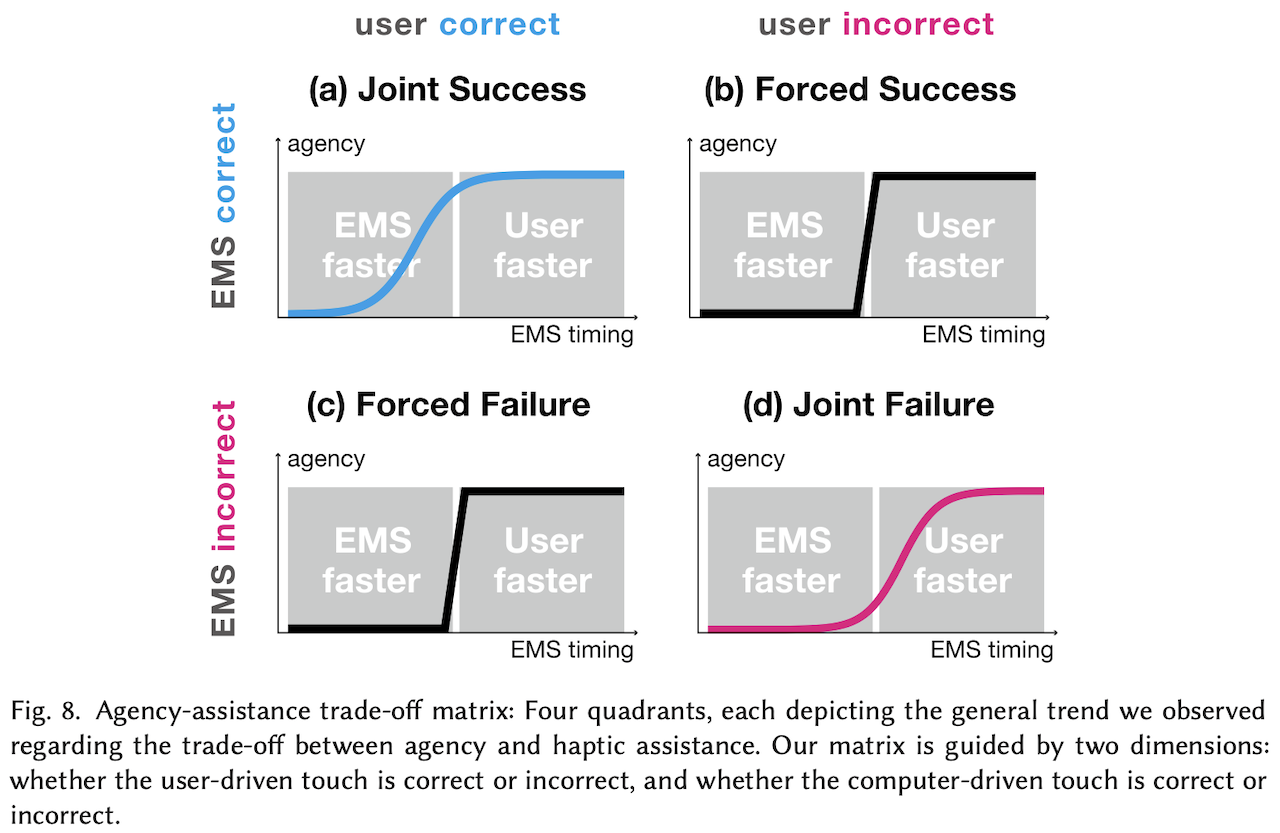
Whose touch is this? ー
Force-feedback enhances digital touch by enabling users to share non-verbal aspects such as rhythm, poses, and so on. To achieve this, interfaces actuate the user’s to touch involuntarily (using exoskeletons or electrical-muscle-stimulation); we refer to this as computer-driven touch. Unfortunately, forcing users to touch causes a loss of their sense of agency. While researchers found that delaying the timing of computer-driven touch preserves agency, they only considered the naïve case when user-driven touch is aligned with computer-driven touch. We argue this is unlikely as it assumes we can perfectly predict user-touches. But, what about all the remainder situations: when the haptics forces the user into an outcome they did not intend or assists the user in an outcome they would not achieve alone?
We unveiled, via our experiments, what happens in these novel situations. We found out that participant's attribution of agency was biased (positively and negatively) by the outcomes, when the computer-driven touch and the user-driven touch are aligned. On the other hand, when the computer-driven touch created an outcome not intended by a participant, the attribution of the agency appeared easier to distinguish. Finally, from these study findings, we synthesized a framework that enables researchers and/or practitioners of digital-touch systems to prioritize/trade-off between haptic-assistance and sense-of-agency.
As of now, our findings originate from using EMS as the case study for this loss of agency in haptic systems. Moving forward, we would expect future researchers to apply and extend our novel study to other force-feedback devices (e.g., magnetic actuation of the finger, mechanical force-feedback joysticks, and exoskeletons), ultimately contributing to a larger understanding that might generalize better.
Finally, we believe that , as we design new types of haptic systems with the capability to perform actions on behalf of users , we start to encounter all these cases of complex/shared agencies. We believe our study systematically explored many of these cases, in particular the situations in which the computer's and user's intentions are in conflict. While these are not yet common place, that is precisely our job as researchers to anticipate the future and design it mindfully of the user's agency.
Daisuke Tajima, Jun Nishida, Pedro Lopes, and Shunichi Kasahara. 2022. Whose Touch is This?: Understanding the Agency Trade-Off Between User-Driven Touch vs. Computer-Driven Touch. ACM Trans. Comput.-Hum. Interact. 29, 3, Article 24 (June 2022), 27 pages. https://doi.org/10.1145/3489608



